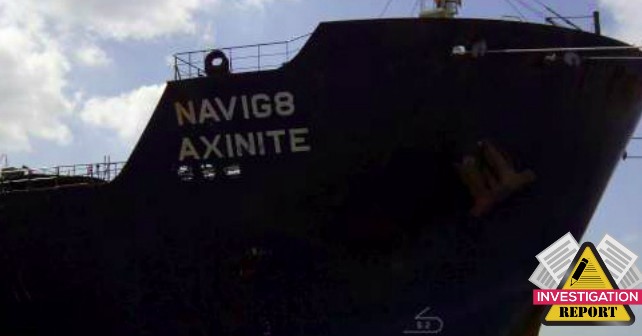RMI issued an investigation report on a Third Engineer fatality onboard the oil/chemical tanker NAVIG8 AXINITE, while underway in the English Channel in July 2020.
The incident
On 29 July 2020, the RMI-registered oil/chemical tanker NAVIG8 AXINITE was underway on a ballast voyage from Rotterdam, Netherlands to Pivdennyi, Ukraine.
While cleaning Cargo Oil Tank (COT) No. 3, port and starboard, it was observed that the wash water was not being heated to the required 75 degrees (°C). Troubleshooting efforts by the crew were not successful in increasing the wash water temperature.
[smlsubform prepend=”GET THE SAFETY4SEA IN YOUR INBOX!” showname=false emailtxt=”” emailholder=”Enter your email address” showsubmit=true submittxt=”Submit” jsthanks=false thankyou=”Thank you for subscribing to our mailing list”]
The Chief Engineer (C/E) then decided that further troubleshooting would wait until after completing the required fuel changeover upon departing the North Sea Emissions Control Area (ECA).
At about 1800, the Third Engineer (3/E) left the engine room for dinner. He informed the Second Engineer (2/E) that he would also have a look on deck before returning to the engine room.
A short time later, a loud bang was heard by crewmembers working near the port cargo manifold. They saw a large quantity of steam coming from the condensate return line observation tank. As they got closer, they discovered the sight glass for the observation tank had failed. They also found the 3/E lying on the deck about 10 m to starboard of the observation tank.
First-aid measures were immediately started; however, the 3/E succumbed to his injuries and was pronounced deceased at 2100 on 29 July 2020.
Probable causes
The RMI marine safety investigation identified the following causal factors:
- failure of the pneumatically controlled valve (TR109), which prevented the proper condensate level control in the tank cleaning heater, which likely allowed steam to pass into the condensate system;
- modification to the observation tank vent reducing the opening to about 5 millimeters (mm), therefore limiting its pressure release capability;
- the observation tank drain valve (TR101) being closed while the steam system was operating at 6 bar, which significantly increased the pressure in the observation tank;
- catastrophic failure of the sight glass on the observation tank from over pressurization; and
- lack of a warning sign or other marking near the TR101 to warn against closure while the steam system is operational.
Additional casual factors identified by the Administrator that may have contributed to this very serious marine casualty include:
- use of a standing risk assessment that did not fully capture all of the risks that could reasonably be expected to be encountered;
- lack of requirements in the company’s preventive maintenance system (PMS) specific to the flame arresting screen for the observation tank; and
- failure to verify the proper deck steam system alignment when the bypass line valves were left open following warm-up.
Actions taken
In response to this very serious marine casualty, the company took the following preventive actions:
1. A safety alert was sent to all ships in the company’s managed fleet to require:
- vents fitted on observation tanks be checked to ensure that no modifications have been made which would restrict them;
- renewal of flame arresting screens fitted on observation tank vents;
- locking arrangements to be fitted on observation tank outlet valves to prevent inadvertent closure; and
- that the observation tank outlet valves are sealed and the seal number entered into the ship’s seal log.
2. The Company’s PMS was amended to include a quarterly inspection of the observation tank flame arresting screens.
3. The observation tank sight glasses onboard ships in the company’s managed fleet were modified to include a metal cover to limit the unprotected glass area.
4. Additional training on tank cleaning heating systems was provided to crews onboard ships in the company’s managed fleet.
5. The standing risk assessment for tank cleaning was updated to include control measures to prevent a similar incident.
6. The incident has been included as a case study to use during crew training seminars.






























































